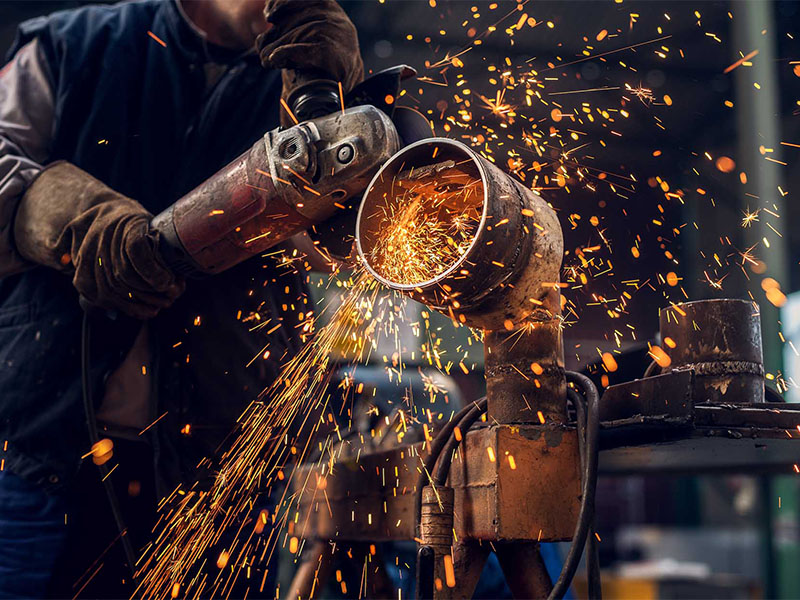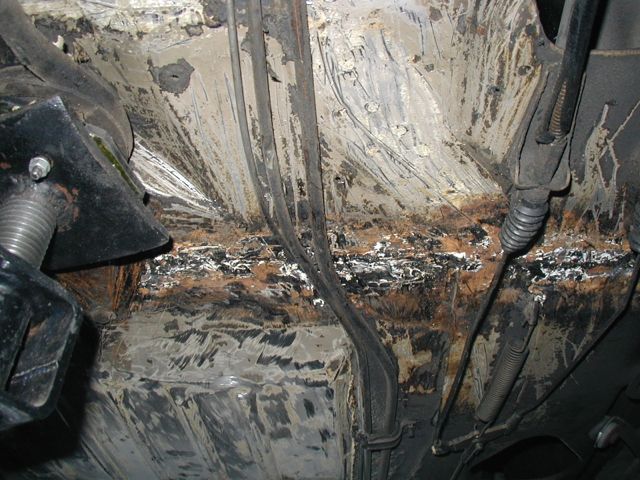Field-tested steps to avoid porosity in welds with Belgrade Welding
All Concerning Welding: Trick Insights Into Techniques and Ideal Practices for Success
Welding incorporates a variety of techniques, each suited for particular products and applications. Recognizing these methods, such as GMAW, SMAW, and TIG, is crucial for accomplishing ideal outcomes. The appropriate equipment and security practices can not be overlooked. As preparation and fixing play essential duties in the welding process, grasping these aspects can substantially boost the high quality of the final product. What are the vital factors that ensure a successful weld?
Understanding Various Welding Strategies
Welding methods encompass a variety of approaches, each suited to particular applications and products. Among the most typical techniques are Gas Steel Arc Welding (GMAW), Shielded Steel Arc Welding (SMAW), and Tungsten Inert Gas Welding (TIG) GMAW, also called MIG welding, is prominent for its rate and convenience, making it suitable for slim materials. SMAW, or stick welding, is favored for its simplicity and efficiency in outdoor atmospheres, specifically with thicker metals. TIG welding offers accuracy and control, making it suitable for complex work and non-ferrous steels (Belgrade Fabrication). Each technique has its unique benefits and factors to consider, permitting welders to select the very best technique based on the task's needs, material type, and wanted outcomes. Understanding these strategies is essential for effective welding
Essential Welding Devices and Tools
While various welding techniques call for certain abilities, the right tools and devices are just as crucial for achieving quality results. Necessary welding tools includes welding devices, which vary depending upon the method-- such as MIG, TIG, or stick welding. Protective gear, consisting of aprons, helmets, and handwear covers, guarantees security and comfort during the process. In addition, components and clamps assist safeguard products in location, making certain accuracy in welds. Consumables like welding rods, cable, and securing gas are additionally essential parts that affect the quality of the weld. Moreover, tools such as cutters and mills facilitate surface area preparation and post-weld finishing, adding to a professional result. Buying top quality equipment ultimately enhances the efficiency and performance of welding tasks.
Safety Practices in Welding
Correct security methods are vital in the welding industry to shield workers from possible dangers. Welders need to put on ideal individual protective tools (PPE), consisting of helmets with correct shading, handwear covers, and flame-resistant apparel. Adequate ventilation is important to minimize direct exposure to unsafe fumes and gases produced during the welding process. In addition, employees must be trained in the proper handling of welding tools to avoid crashes. Fire precaution, such as keeping flammable products away from the welding area and having fire extinguishers conveniently available, are necessary. Regular evaluations of tools and work areas can assist identify possible threats prior to they result in crashes. By adhering to these safety practices, welders can develop a safer working setting and lessen threats linked with their trade.
Preparing Materials for Welding
Preparing materials for welding is a crucial step that significantly influences the high quality and integrity of the last product (Montana Mobile Welding and Repair Belgrade). Proper preparation involves cleaning up the surfaces to remove pollutants such as oil, rust, and dust, which can compromise the weld. Techniques such as grinding, sanding, or utilizing solvents are generally employed to attain a tidy surface area. Furthermore, ensuring that the materials fit with each other snugly is vital; voids can cause weak welds. It's additionally important to think about the positioning and positioning of the parts, as this will affect the ease of welding and the last end result. Lastly, selecting the suitable filler material and guaranteeing compatibility with the base steels is important for achieving solid, resilient welds
Tips for Achieving High-Quality Welds
Attaining premium welds requires attention to information and adherence to finest techniques throughout the welding process. Correct joint preparation is necessary, guaranteeing surface areas are complimentary and tidy from pollutants. Picking the suitable filler product and welding method based on the base steels is vital for perfect bonding. Preserving constant traveling speed and angle while welding can promote and stop issues harmony. In addition, regulating warm input is vital; excessive heat can result in bending and weakened joints. If necessary, routinely inspecting the welds throughout the process enables for instant adjustments. Using proper post-weld treatments, such as cleansing and tension alleviation, can improve the resilience and honesty of the weld, eventually guaranteeing a successful outcome.
Repairing Usual Welding Issues
Welding commonly provides challenges that can affect the top quality and stability of the final product. Common problems such as porosity, irregular weld beads, and getting too hot can occur, each requiring details troubleshooting methods. Comprehending these troubles is crucial for welders to enhance their abilities and attain perfect outcomes.
Porosity Issues Described
Although porosity can typically be forgotten, it continues to be a crucial concern in welding that can compromise the integrity of a finished product. Porosity refers to the visibility of tiny gas pockets within the weld grain, which can damage the joint and lead to early failing. This problem normally occurs from pollutants, dampness, or improper protecting gas coverage during the welding process. To alleviate porosity, welders must validate that the base products are clean and dry, utilize appropriate protecting gases, and preserve consistent welding parameters. Regularly checking the tools and atmosphere can additionally aid determine prospective problems prior to they show up in the weld. Addressing porosity efficiently is crucial for achieving solid, sturdy welds that meet quality criteria.

Inconsistent Weld Beans
Inconsistent weld beads can significantly impact the high quality and strength of an ended up product. Numerous elements add to this issue, consisting of improper travel speed, inaccurate amperage setups, and inconsistent electrode angles. When the welder moves too rapidly, a bead might show up narrow and lack penetration, while relocating also gradually can cause excessive buildup. Furthermore, utilizing the incorrect amperage can result in either undercutting or extreme Full Article spatter, both of which concession weld integrity. The welder's method, such as inconsistent torch motion, can also bring about unequal grain appearance. To alleviate these troubles, welders need to concentrate on maintaining constant, controlled activities and making certain appropriate tools setups to attain harmony in their welds. Uniformity is key to attaining reputable and solid welds.
Overheating and Warping Issues
Extreme warmth throughout the welding process can cause considerable overheating and deforming issues, affecting the structural honesty of the workpiece. These problems often show up as distortion, which can compromise placement and fit-up, making additional assembly challenging. Factors adding to overheating consist of the option of welding criteria, such as voltage and take a trip rate, as well as the kind of material being bonded. To mitigate these problems, welders should preserve consistent traveling speed and proper warm input while keeping an eye on the workpiece temperature level. In addition, preheating or post-weld warm therapy can assist ease anxieties triggered by quick cooling - Montana Mobile Welding and Repair Welding. Normal evaluation and adherence to ideal methods are important in avoiding overheating and making sure the durability and integrity of bonded frameworks
Frequently Asked Inquiries
What Are the Profession Opportunities in the Welding Sector?
The welding sector supplies varied profession opportunities, including placements as welders, engineers, examiners, and teachers. Specialists can work in manufacturing, building and construction, aerospace, and auto markets, benefiting from strong need and competitive incomes in numerous functions.
Just How Can I Boost My Welding Speed Without Giving Up Quality?
To enhance welding rate without giving up top quality, one should practice reliable techniques, maintain tools, optimize setups, and enhance hand-eye sychronisation. Normal training and seeking responses can also substantially add to achieving much faster, visit this website top quality welds.
What Certifications Are Offered for Welders?
Many qualifications exist for welders, including those from the American Welding Society (AWS), the National Center for Building And Construction Education And Learning and Study (NCCER), and various industry-specific organizations. These qualifications boost employability and demonstrate skill efficiency.
Just How Does Welding Affect the Features of Metals?
Welding affects the buildings of steels by altering their microstructure, which can cause changes in firmness, strength, and ductility. Warmth input and air conditioning prices during the procedure substantially impact these product qualities.
Can I Bonded Dissimilar Metals With Each Other?
